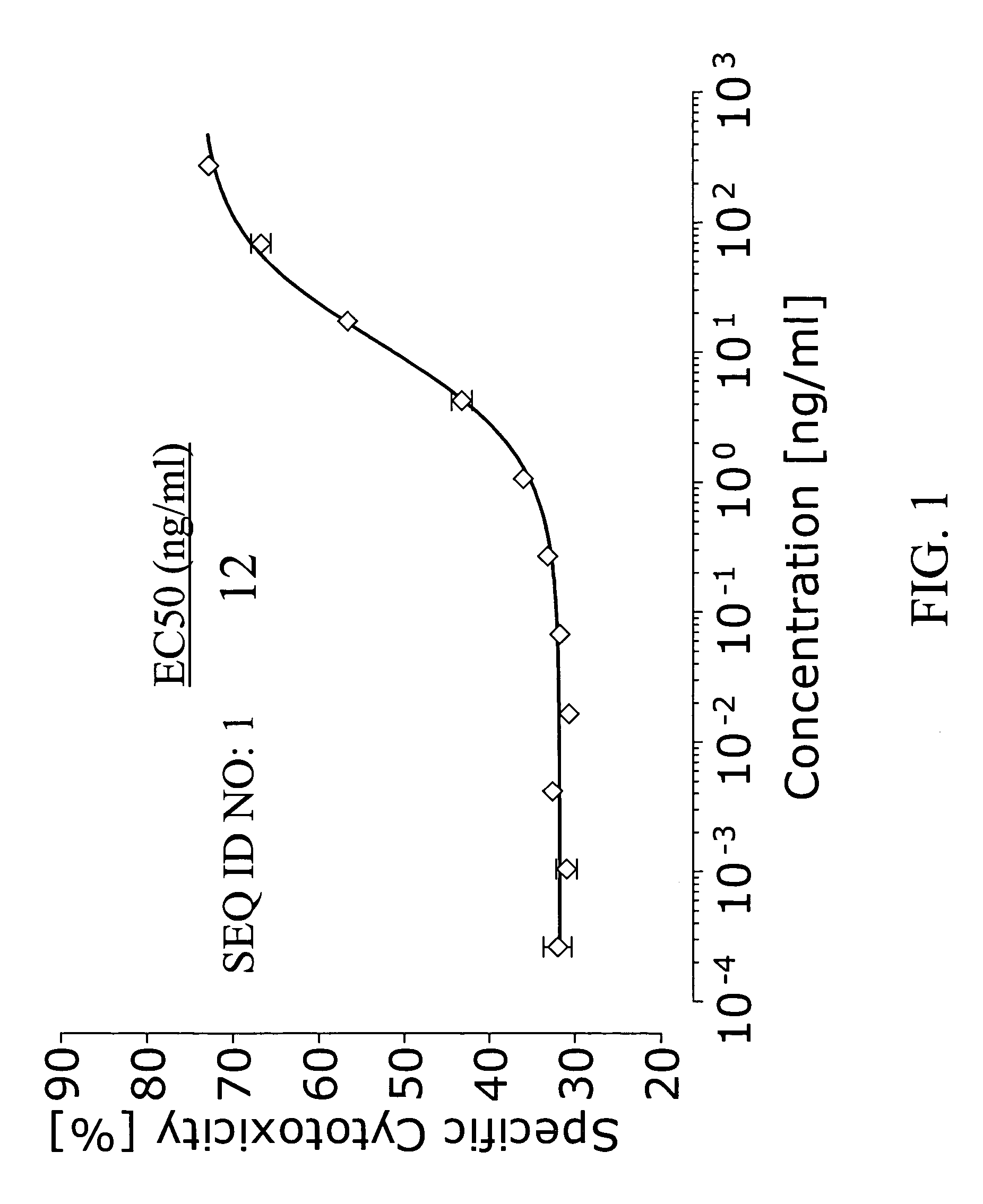Bispecific antibodies
a technology of bispecific antibodies and antibodies, applied in the field of antibodies, can solve the problems of unrealised antibodies resulting from quadromas, unrealized antibodies in conventional bacterial expression systems, and need to use less conventional, so as to reduce the number of potential partners, reduce the number of antibody variable domains, and reduce the complexity of molecular design.
- Summary
- Abstract
- Description
- Claims
- Application Information
AI Technical Summary
Benefits of technology
Problems solved by technology
Method used
Image
Examples
example 1
Design, Prokaryotic Expression and Purification of a Bispecific Antibody With Three Antibody Variable Domains
[0066]The DNA encoding an anti-EpCAM×anti-CD3 bispecific antibody with a VL and VH in the anti-EpCAM portion of the molecule and only one antibody variable domain (VH) in the anti CD3 portion of the molecule are cloned in the multiple cloning site (MCS) of pET-20b(+) vector (Novagen). The expression of the bispecific antibody with a Histidine (×6) tag is induced with IPTG. The choice of the vector facilitates the transport of the recombinant proteins into the periplasm. Other cloning vectors such as pBAD-gIII (Invitrogen), pET-32 series (+) vector (Novagen) may also be used. For pBAD-gIII-based expression, arabinose is used to induce recombinant gene expression instead of IPTG. In any case it is important to ensure that the DNA encoding the bispecific antibody is cloned in-frame with the sequence encoding the signal peptide (e.g., PeIB, OmpA) that mediates the transport of th...
example 2
Cytotoxicity Assay
[0072]The ability of the bispecific antibody with the sequence set out in SEQ ID NO: 1 to recruit the cytotoxic potential of human cytotoxic T cells to effect the killing of cells bearing the human EpCAM antigen was measured in a cytotoxicity assay as follows.
[0073]CHO cells from the American Type Cell Culture Collection (ATCC, USA) were transfected to express, human epithelial cell adhesion molecule (EpCAM) as the target antigen. Cells cultured from the resulting cell clone, referred to as CHO-EpCAM cells, were subsequently used in the cytotoxicity experiments as the target cells. The human cell line MC15 was used as a source of effector cells bearing the effector antigen CD3. The cell clone was derived from the cell clone CB15, which is a CD4-positive human T cell clone kindly provided by Dr. Fickenscher at the University of Erlangen / Nürnberg, Germany. Cells were cultured as recommended by the respective suppliers.
[0074]1.5×107 target cells were washed twice with...
PUM
| Property | Measurement | Unit |
|---|---|---|
| pH | aaaaa | aaaaa |
| pH | aaaaa | aaaaa |
| concentration | aaaaa | aaaaa |
Abstract
Description
Claims
Application Information
 Login to View More
Login to View More - R&D
- Intellectual Property
- Life Sciences
- Materials
- Tech Scout
- Unparalleled Data Quality
- Higher Quality Content
- 60% Fewer Hallucinations
Browse by: Latest US Patents, China's latest patents, Technical Efficacy Thesaurus, Application Domain, Technology Topic, Popular Technical Reports.
© 2025 PatSnap. All rights reserved.Legal|Privacy policy|Modern Slavery Act Transparency Statement|Sitemap|About US| Contact US: help@patsnap.com

